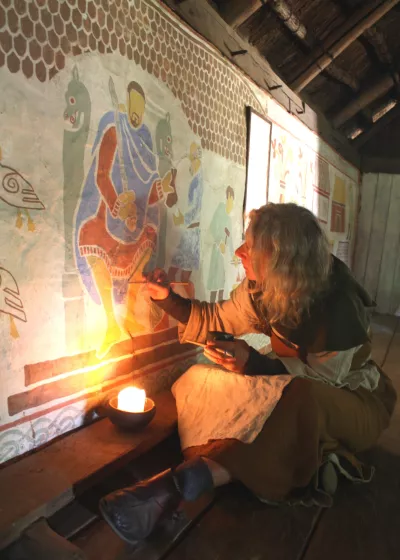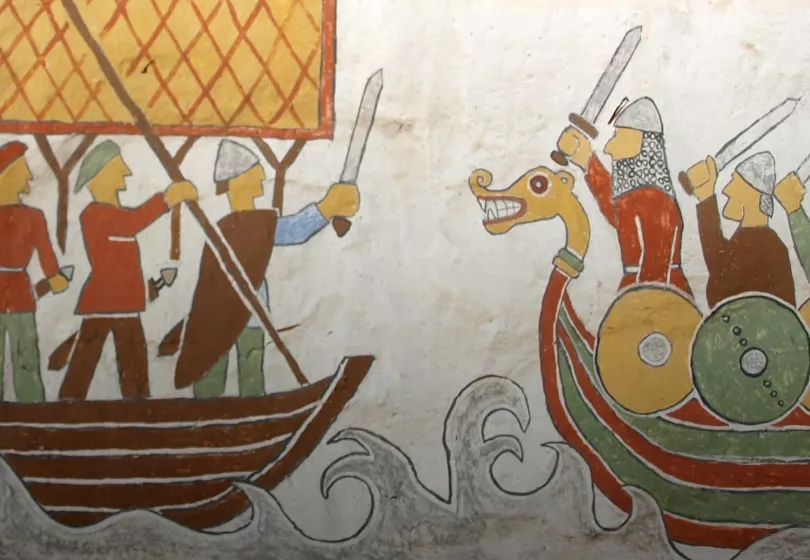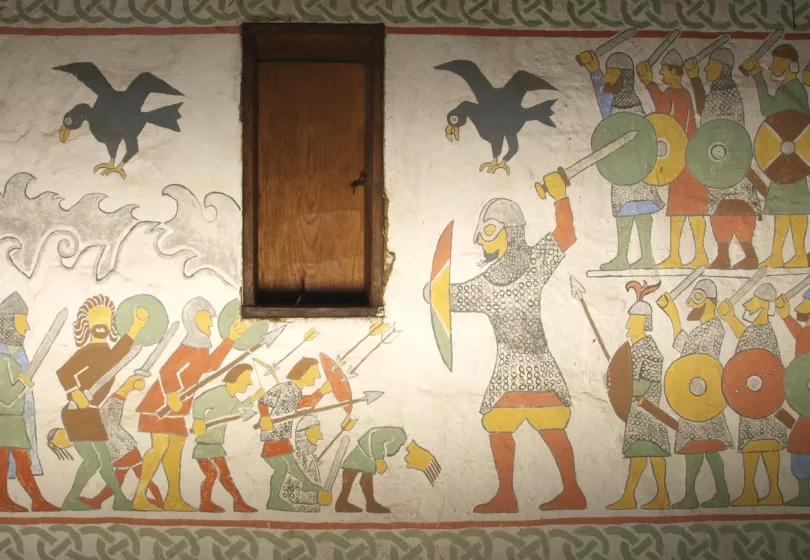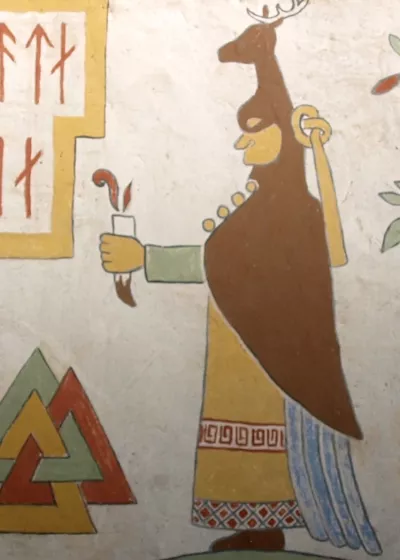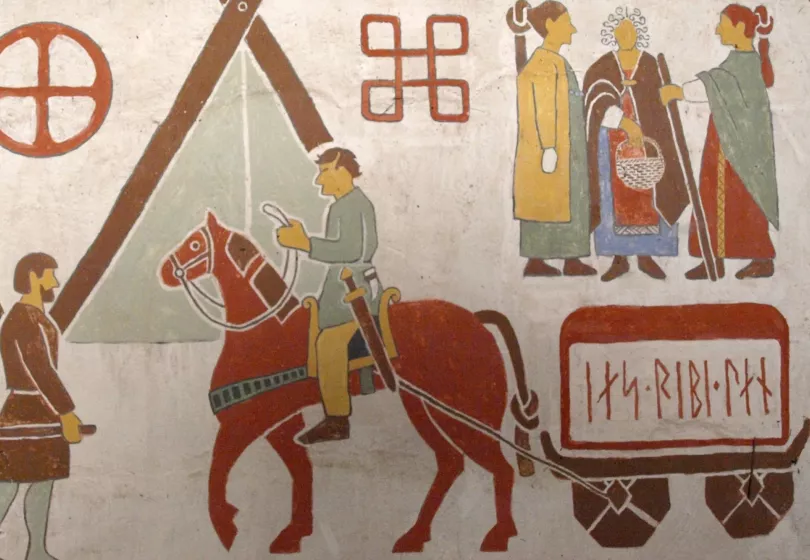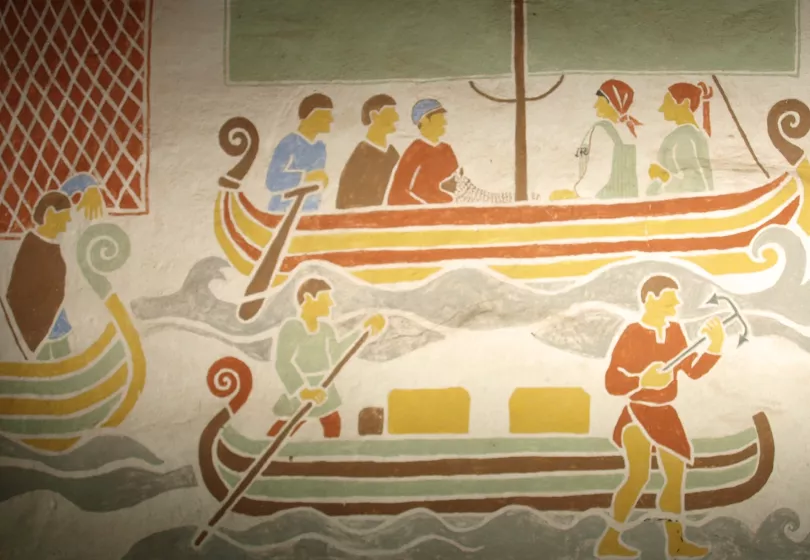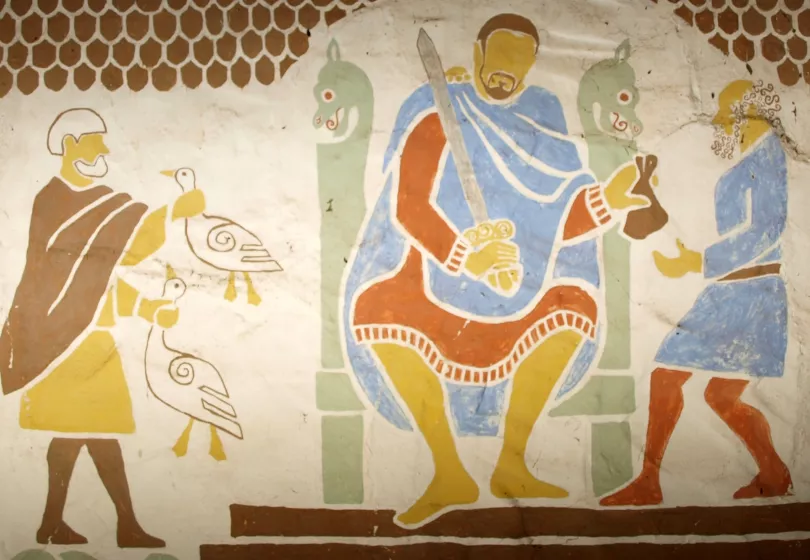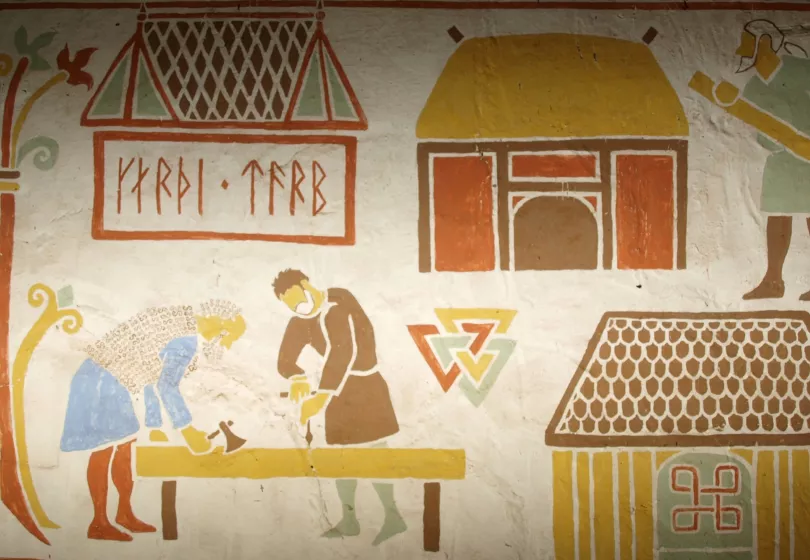The foundation of Ribe
To mark Ribe’s 1300th town anniversary in 2010, the walls of the Thing-hall were adorned with a 20 m long mural all made by visual artist Trine Theut. It depicts the story of the foundation of Denmark’s oldest town, Ribe. From around 700 AD when Frisian merchants were banished from the marketplace and up until the early 800s when the first town houses were built.


The paints used in the mural are composed, as they would have been in the Viking Age, of earth pigments bound with chalk.
The style of the painting is also appropriate to the Viking Age, and the figures in the story have been recreated from depictions on runic stones, as well as carved
and woven imagery from the period.
In the Viking Age, there was a tradition of perpetuating legends and events in poetry and pictorial friezes. The images could be embroidered, woven, carved in wood, carved in stone or painted on walls. The Bayeux Tapestry is one of the most significant archaeological image sources for the Viking Age and a specific historical event. You could call the picture stories 'Viking Age comics'. Images were important to the people of the time and perhaps even more important than text.


